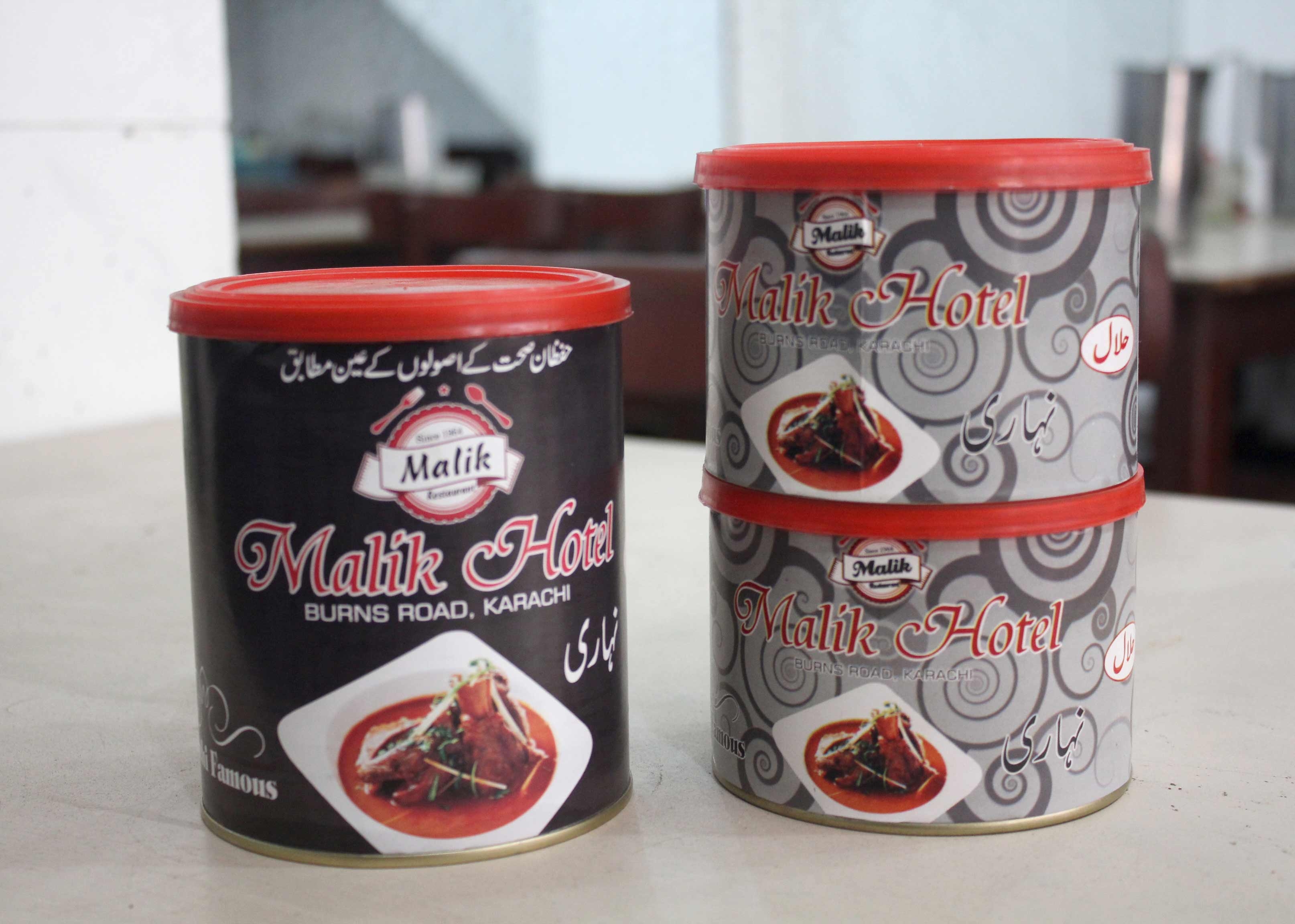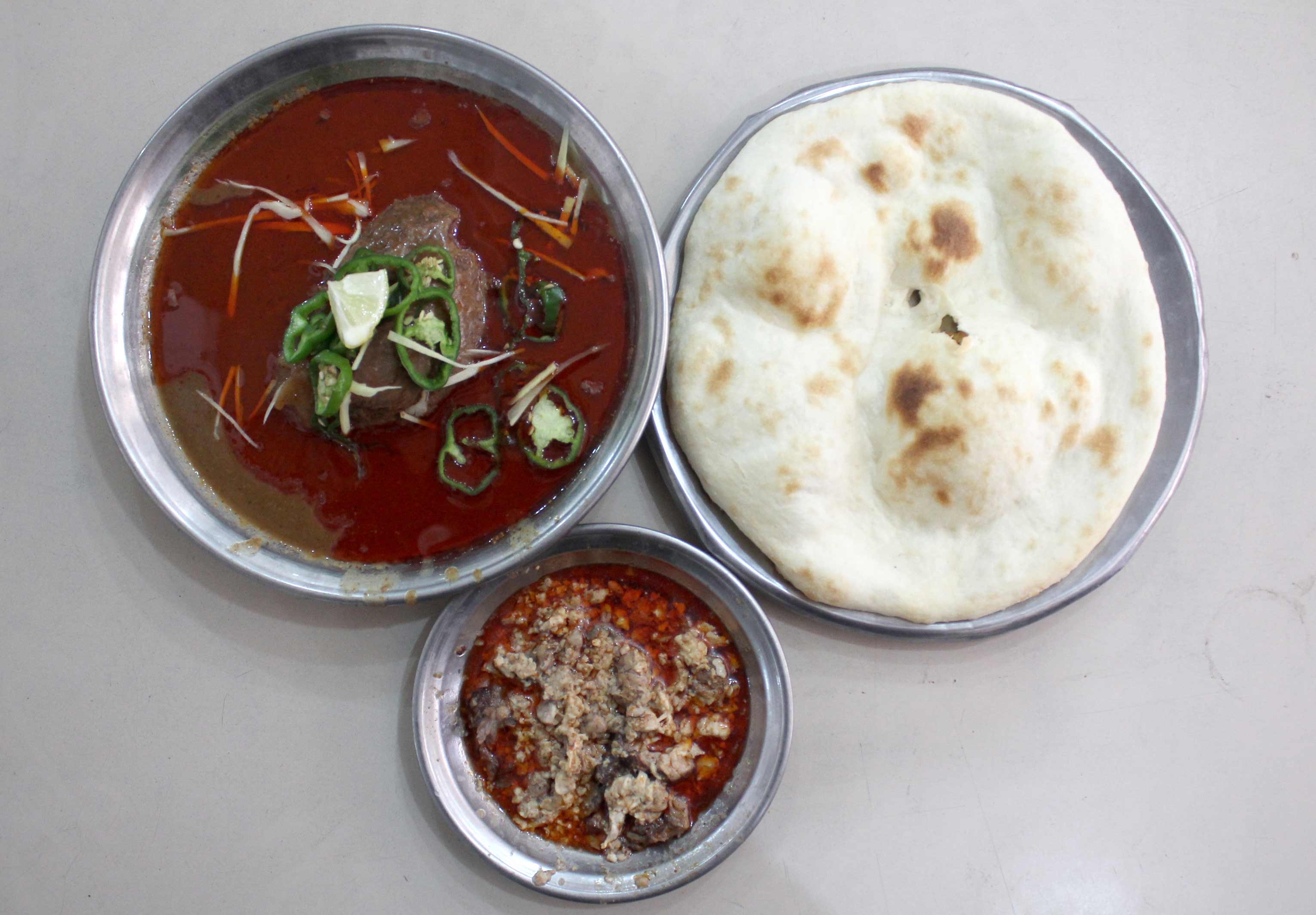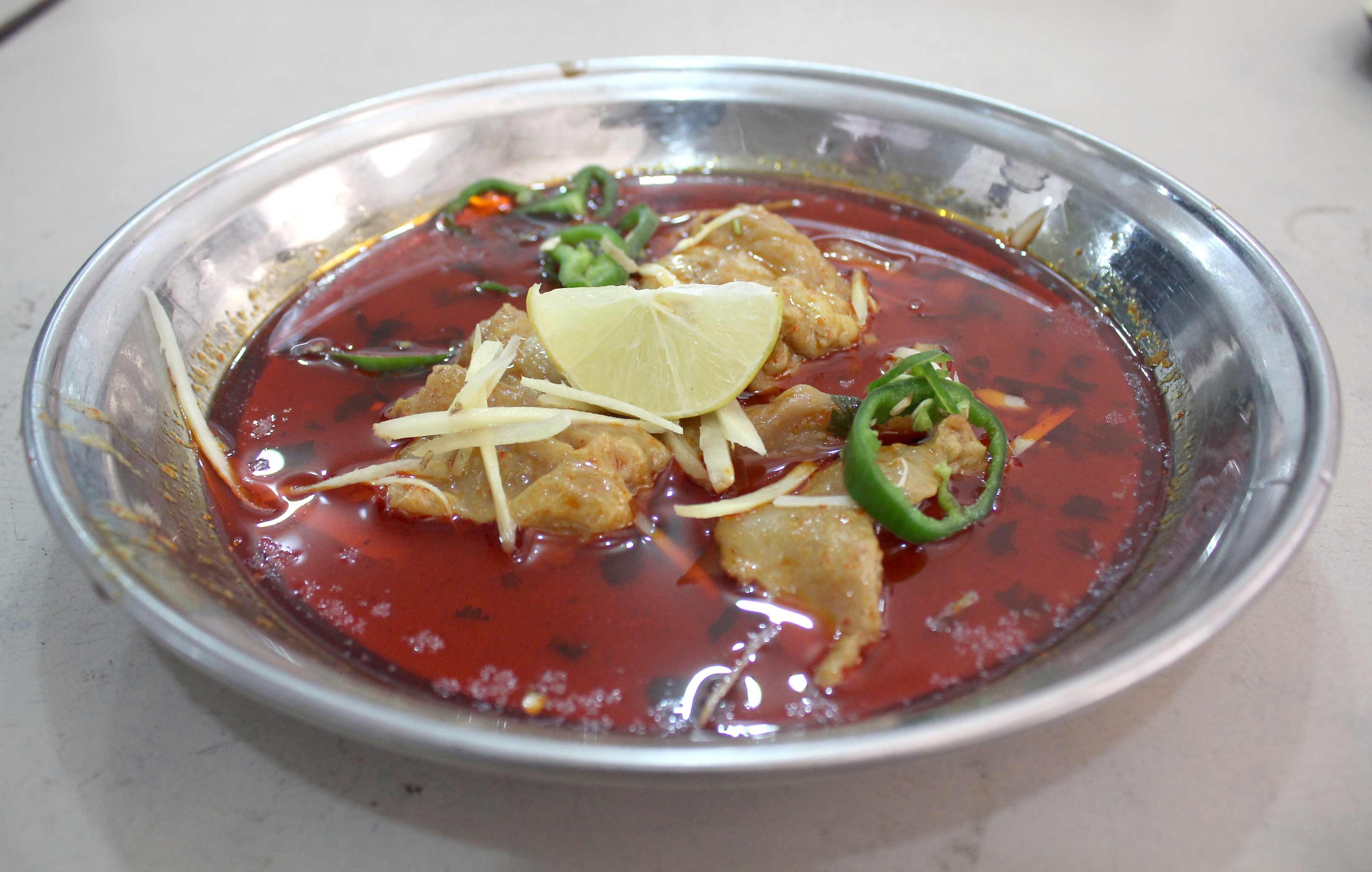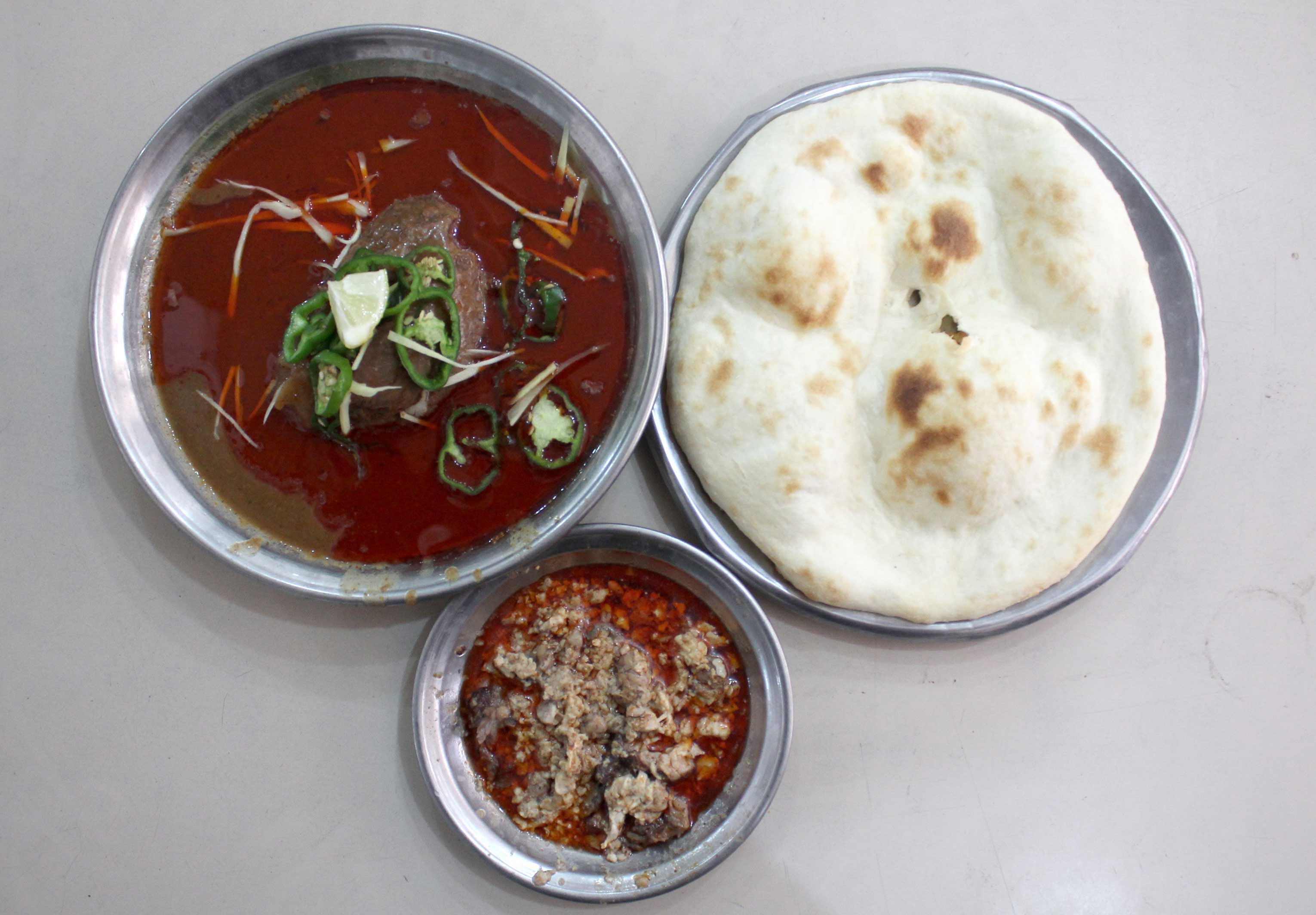

Legend has it that at the twilight of Mughal emperor Shahjahan’s reign, the capital city Shajahanabad, now Old Delhi, was struck by an unrestrained outbreak of influenza. The whole city was sneezing, coughing, and shivering with fever. The epidemic was stringently unprejudiced… so it did not spare even the royalty. Following a high-level meeting, healthcare authorities, masters of herbal medicine with unmatched clinical acumen brainstormed the causes of and the cures for the phlegmatic pestilence. Among other guidelines issued, the Hakims recommended slow-cooked foods for fast-looking recovery. Thus special recipes were concocted for slow-cooked, savoury, seasoned curries of beef and trotters called Nihari and Payas respectively.
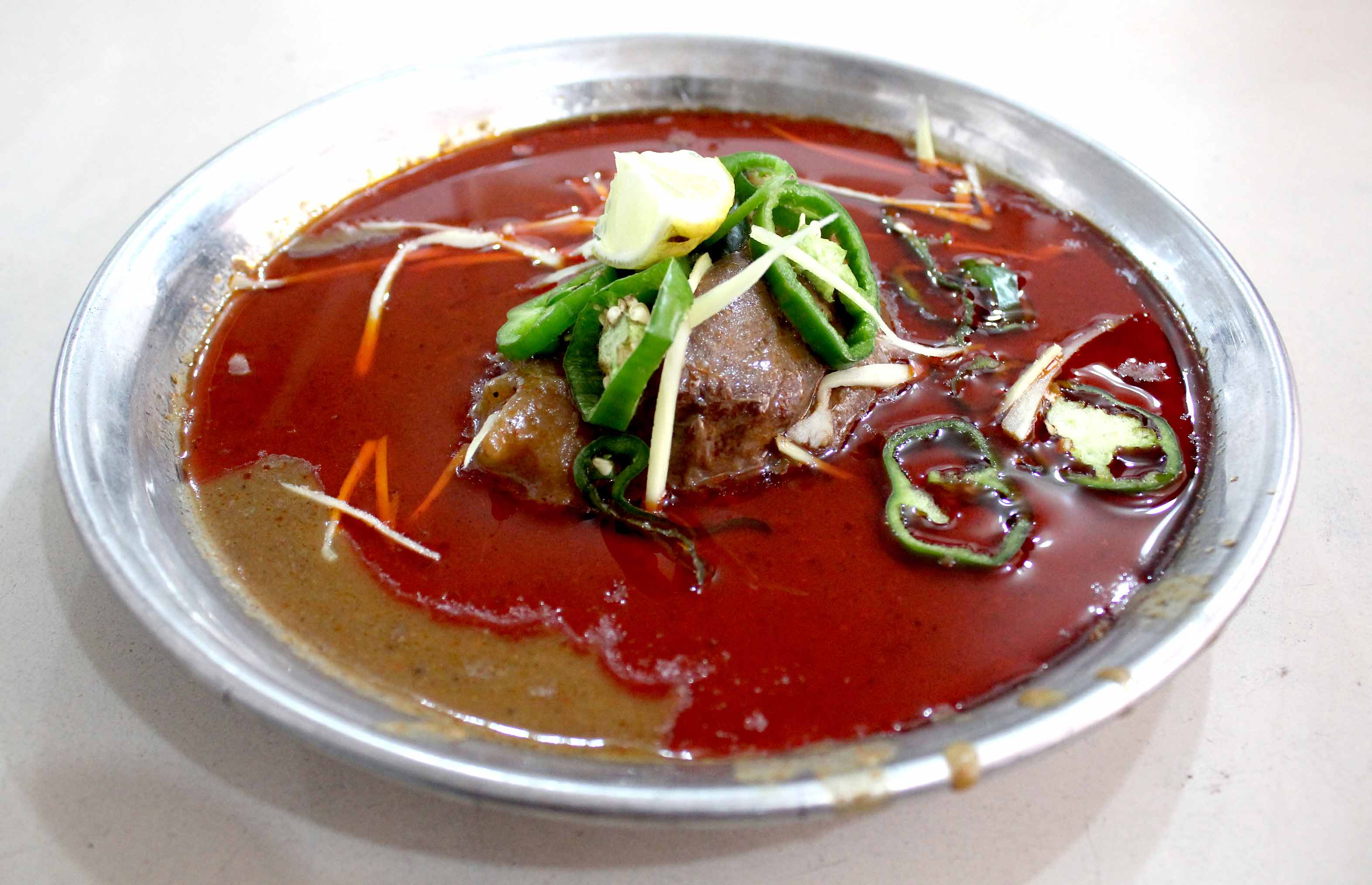
“These soul-warming dishes demand fine meat cuts, gelatinous foot/shank bones, aromatic greens, and motley of magical spices. Even today we cook them the way Mughals had my ancestors stew these dainties for them in the royal kitchens hundreds of years ago. We have been dealing in these delectable delights for seven generations,” said Gul Ahmed Ali, the proud owner of famed traditional cuisine outlet Malik Nihari located on Burns Road.
Burns Road is the food central of the coastal city of 20 million. It’s almost always on, satisfying the sweet and spicy teeth of the diverse population of this culturally rich metropolis. From dawn-till-dawn gourmands can be seen biting off more than what they can chew and getting away with it happily more often than not. It is the most happening hangout for the tasteful epicureans, who swear by the wide array of foods it has to offer. If you have a thought for food this street in Saddar Town has plenty of food for thought.
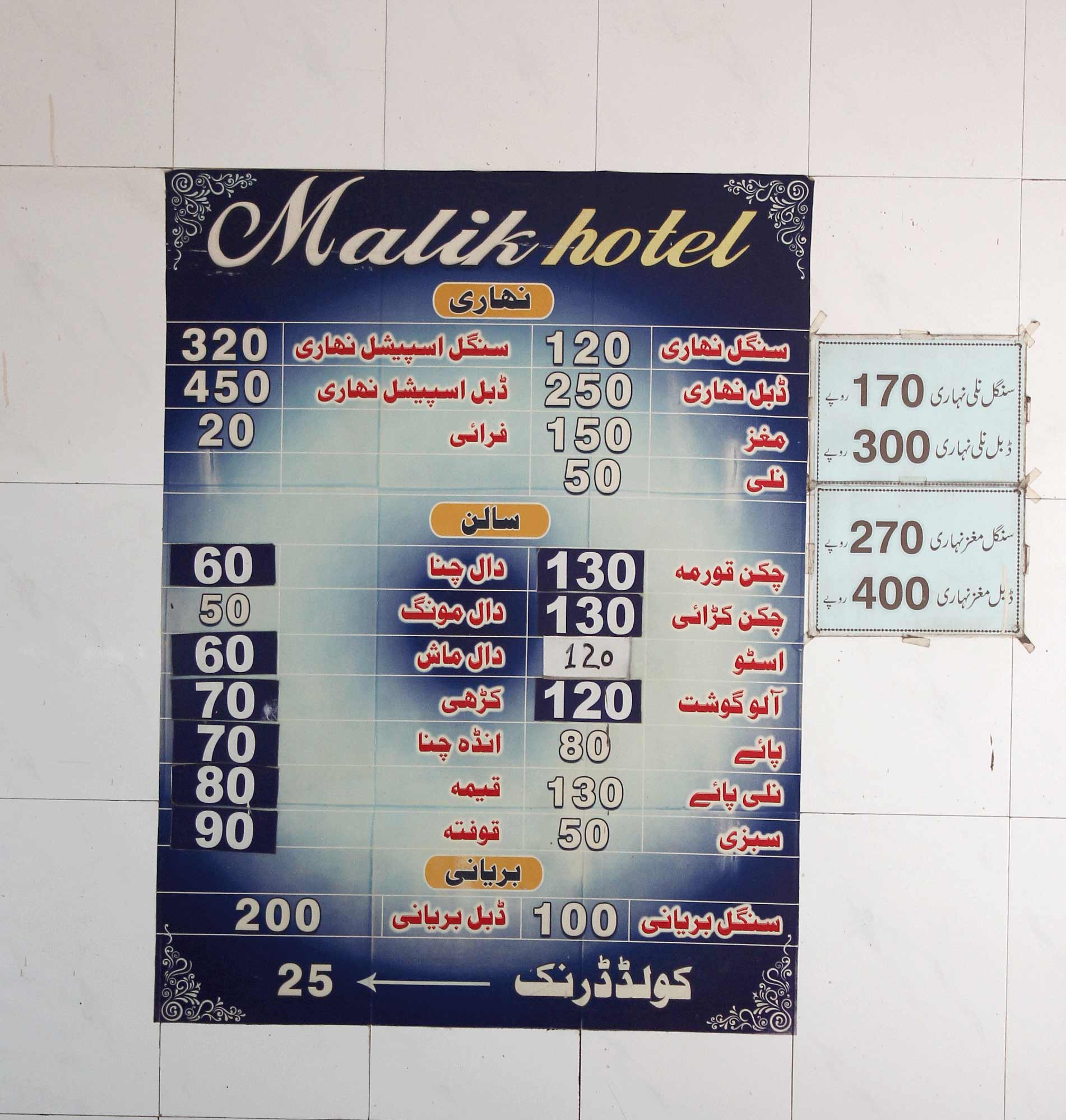
“Nihari was traditionally an early morning glory of a dish, which mostly became the dinner of the ‘bon vivants’ back in the day. It is however now sold/served 24/7, ” the owner said smiling as we sat in the corner of the neat diner filled with indistinct appetizing aromas of distinct seasons and the warm toothsome whiffs of freshly baked Naans (leavened bread) from a nearby tandoor (clay oven).
It is said that aristocracy of Awadh, after laying out a good deal of their nubile nights in frothy revelries, used to munificently indulge themselves with brothy Nihari soaked in special Kulchas after Fajr (daybreak). In the wake of this princely brekkie, as the British would call it, they traveled to the land of the nod and stayed there until Zuhr (noon). It is because assimilating Nihari is not everyone’s cup of tea, especially the couch-warming nobility, so they slept it off.
“The word ’Malik’ in the name of our restaurant comes from the royal court of the Mughal emperor, whose name means the ruler of the world. Actually Shah Jahan himself vested my ancestor with the title of ‘Malik’, which itself means king. That forefather of mine was a chef in the royal kitchen. You can call him the ‘king of cooking.’ So when you are savoring our Nihari, you are in fact relishing the richness of the culinary history of subcontinent,” …told The News.
The credit of enriching a number of Mughal delicacies with new spices goes to Shah Jahan, who commissioned more turmeric (haldi), red chilies, cumin, and coriander into different dishes for their medicinal properties. Most of the Mughal gastronomy was whoopee of hues, aromas, try-eats, etiquette, and aesthetics. History has it that Mughal monarchs, by and large, broke their luxurious bread with their wives and courtesans but on special days they shared table with the noblemen and royal guests. In those days, royal menus were set by the Hakims, who made sure the food to be served was viable, wholesome, invigorating, and left the royal taste-buds excited in the most pleasant of ways.
“We cook cauldrons and cauldrons of Nihari, Payas, Biryani, Qaurma, and Daal Sabzi with the best of ingredients. From the very first morsel to the last, you will feel like the food you are feasting on has come straight out of the royal kitchen,” said he with an unchallengeable conviction in his voice.
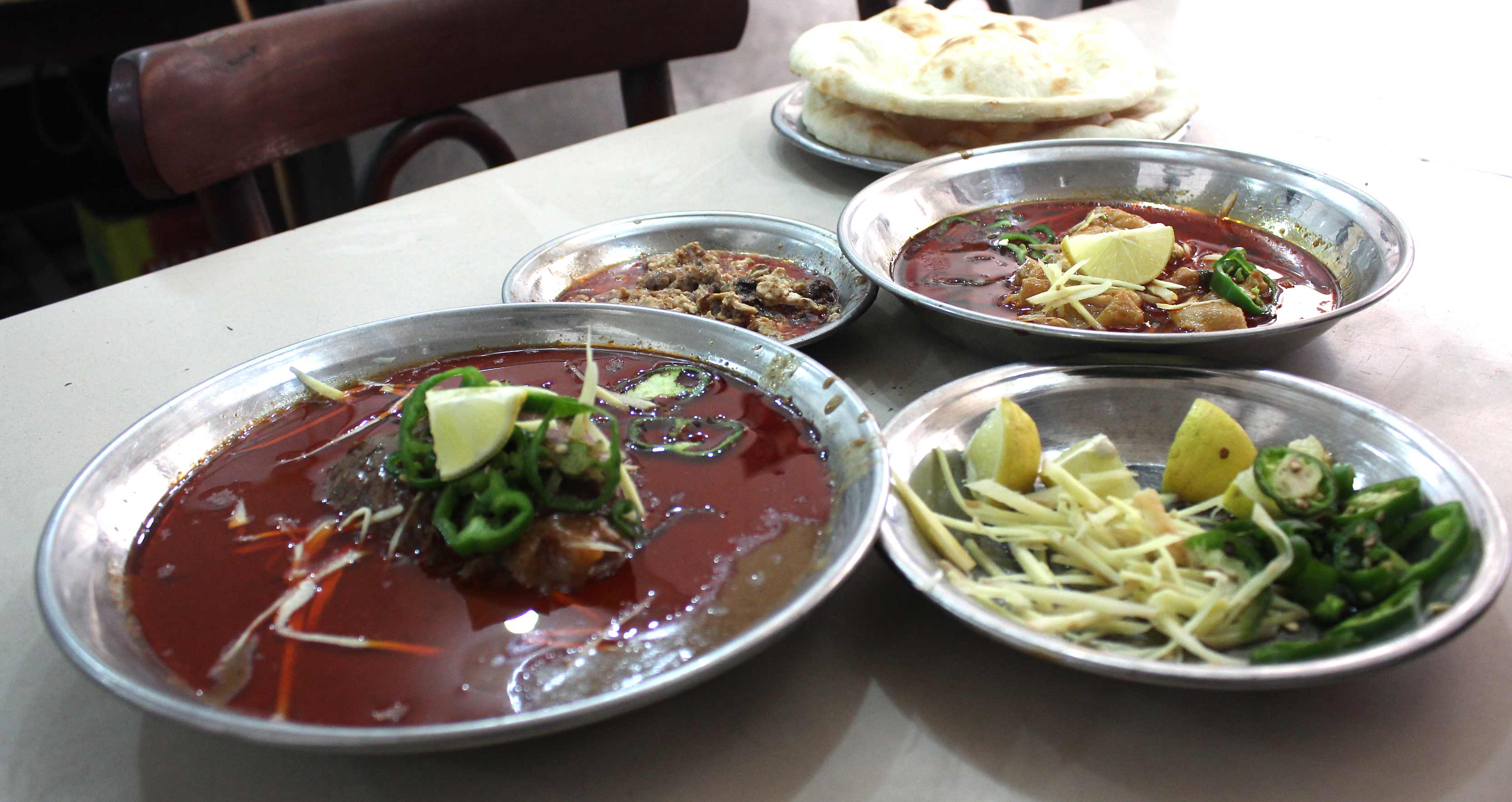
It’s no secret that it takes meat, spices, oil/ghee to prepare these traditional dishes; however, by putting all these things in a vessel and cooking them for hours does not guarantee the taste to die for. The taste is not in the mix but how it’s mixed. It’s the fingers of the cook that know how much of what needs to slip through them to make a food taste great. And that is the trade secret that makes all the difference.
“We cook our foods in ghee and not oil. It does make a difference in taste. These recipes, like heritage, go down from generation to generation. I learnt the art of cooking from my father and have taught it to my son, who is a Bahria University graduate, and a few other trustworthy assistants. Apart from these foods, we also bake different sorts of breads including Doodhia Roti (milk bread) taftan. We procure all the foodstuffs especially meat from the choice dealers. That’s why our Khana is the best in the subcontinent."
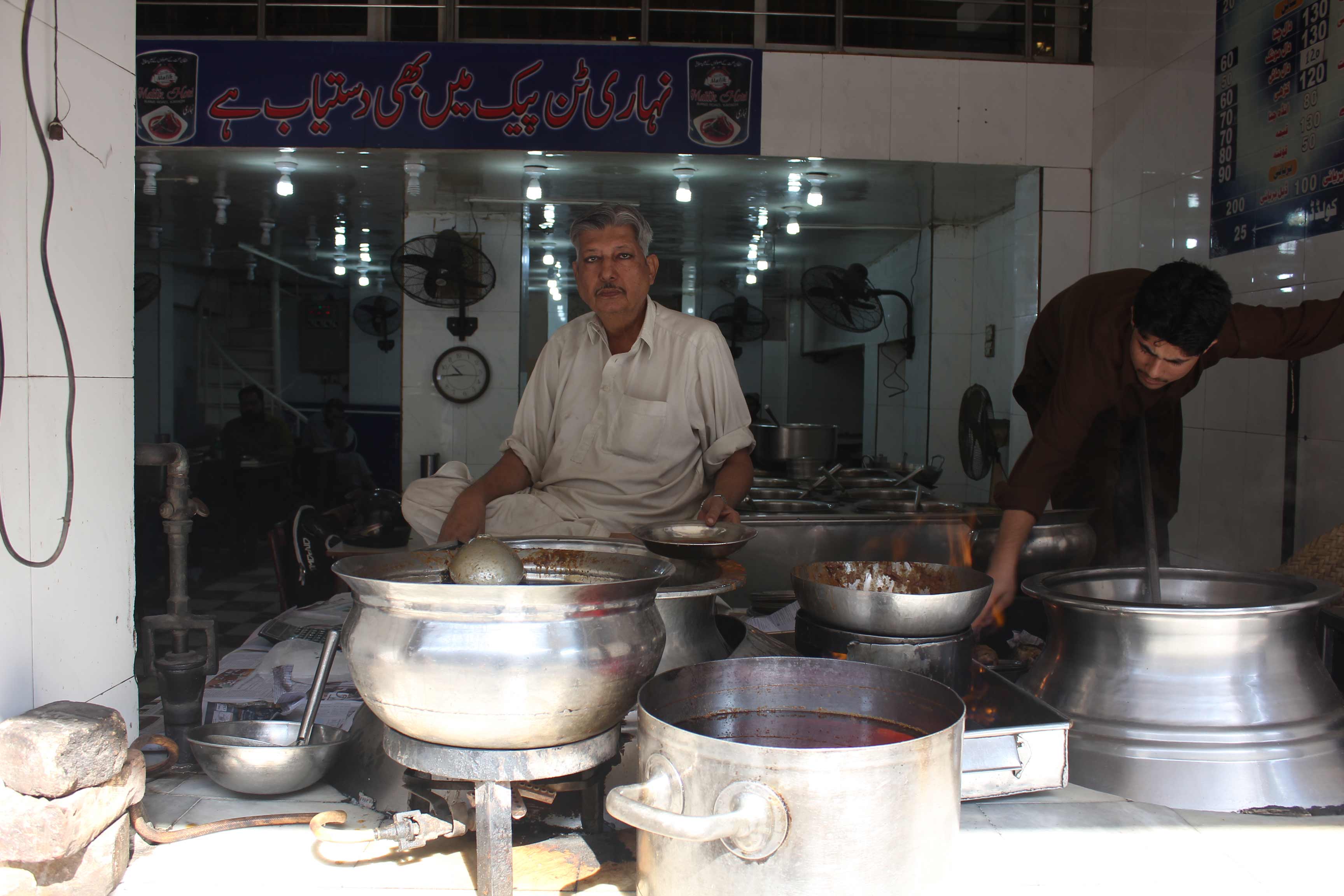
Gul Ahmed Ali, the owner of restaurant
When asked if you have ever faced any problems from the food authorities, he said, "Malik Nihari has never been afraid of food department’s quality control teams. We welcome them with a broad smile because we are the best. People have no idea how foods served at other so-called high-end eateries are eating into their health and wealth. Not everything that tastes good is healthy. We never compromise on quality, come what may.”
To the query if his relatives in India are also carrying on the culinary legacy of his ancestors, he shook his head and said, “my relatives still live in Delhi but none of them is in their ancestral line of work. They have moved on to other trades to make living. We seldom exchanged visits. I have to admit that I have never been to India myself.”

Reflecting over the commercial success of his business over those years, he summed it up like this: “Times were good when we had started this diner. Even in the face of political instability. People were content and happy. Now it’s different. Food inflation has made it difficult for consumers to eat out regularly. Nihari used to be sold for Rs5 a plate in the past but now it costs Rs130. Beef is the ideal meat for Nihari, but enduring dearness has forced us to use chicken instead.”
Are there any memories that you would like to share with us?
“A number of political figures have been to our restaurant. The founder of Pakistan People’s Party, Zulfiqar Ali Bhutto used to eat at our restaurant in his heyday. Also, the incumbent Prime Minister of Pakistan Mian Nawaz Sharif, who is himself a food lover of fervent proportions, has also tasted our Nihari and Qaurma with great gusto. It’s always good to remember those moments.”
Any regrets that you would like to talk about?
“None that I know of [smiles], but I must add that success comes at a price. I spent my youth working by the side of my father. Preparing food at commercial scale is not an easy job. Along with ingredients worth thousands of rupees, your reputation is also at stake. You have to stew in your own juices, while slow-cooking that much amount of food. A small miscalculation can cost you a fortune. It’s a painstaking job that demands patience and dedication. That’s why I couldn’t get time to entertain my interests like playing cricket, frequenting the cinema, and other recreations. I have always been a fan of Dilip Kumar, Noor Jehan, Mukesh and Mehandi Hassan.”










